When the VW ID.3 arrived in 2019, it was like the VW Beetle of the 21st century, marking a new era at Volkswagen. The VW Trinity will take the baton to continue the wave of technology revolutions at Volkswagen in 2026. Volkswagen Group released the first teaser at the New Auto event earlier this year, giving a preview of its sleek and futuristic front-end. The company also shared new details about its platform at the event.
This wasn’t the first time Volkswagen Group teased the VW Trinity. At an event held at the Move Experience Center in Amsterdam in June 2021, the company showcased the ID.4 GTX in metal and teased the VW Trinity’s silhouette, along with the VW ID.2 entry-level EV that we saw as the VW ID.Life concept later at IAA 2021. That VW Trinity teaser actually first came out with the Project Trinity announcement in March 2021.
A lighthouse project
The VW Trinity is the project name of an all-new pure electric sedan-cross with a flat, sporty body. A lighthouse project and Volkswagen’s software dream car, as the company’s CEO Ralf Brandstatter describes it, the Trinity will offer high range and extremely short charging times. In its Q1 2021 (interim) report, the German automaker said that this model is going to “set new standards in terms of range, charging speed, and digitalisation.”
SSP platform
The VW Trinity project will sit on the Scalable Systems Platform (SSP), which Volkswagen describes as the next generation of the all-electric, fully digital, and highly modular vehicle platform.
Volkswagen Group will deploy SSP modules to a significant extent first in the Audi Artemis project in 2025. Then, in 2026, it will utilize SSP to its full extent for making an affordable electric sedan under the VW Trinity project.
With its high-tech future project Trinity, a level-4 ready fully electric car, the Volkswagen brand will bring the Artemis technology into the volume segment. Affordable for all.
Dr. Herbert Diess, CEO, Volkswagen Group
The onboard connectivity and software will be based on the VW.OS operating system and CARIAD is in charge of that. VW.OS v1.2 is going into PPE platform models like the Audi Q6 e-tron and the Porsche Macan EV, and the SSP platform models that are due much later will have VW.OS v2.0 on board. Volkswagen may develop the battery cell for the VW Trinity project with the unified cell concept, in which the basic format/design remains the same for most EVs.
A new software stack called E³ 2.0, or simply stack 2.0, will be the basis for VW.OS. This new software stack will first deliver the Audi Artemis project’s vehicle software, Dirk Hilgenberg, CEO, CARIAD, revealed at Volkswagen Group’s New Auto event.
Volkswagen Group will deploy SSP modules to a significant extent first in the Audi Artemis project in 2025. Then, in 2026, it will utilise SSP to its full extent for making an affordable electric sedan under the VW Trinity project.
Dirk Hilgenberg, CEO, CARIAD
700 km range for the VW Trinity project
While the VW ID.3 was about the start of bespoke EV platforms and developing mass-market EVs from the ground up, the VW Trinity project will mark the beginning of highly software-based EVs. Volkswagen is planning significantly fewer variants and largely standardized hardware for the Trinity and other EVs it plans to launch later in the decade. For the company, this approach would considerably reduce production complexity. In addition, its customers will benefit from having virtually every feature onboard and the flexibility of enabling them any time during the ownership, potentially even years after getting the delivery.

Volkswagen Group plans to make the VW Trinity sedan-cross in limited technical configurations to achieve a high level of production efficiency. The car will be hardware-ready for most of the features across the range. So, customers will be able to activate features even after they take the delivery of the car, any time during its lifecycle. In addition to lowering production costs, the company would open up a new revenue stream.
With CARIAD, we are fully committed to developing the leading automotive software stack in the industry. We are moving towards a synergetic business model. Most of the software-related R&D costs of the brand have been shifted to CARIAD, which will be reported as a stand-alone entity in the future. The CARIAD business model foresees a significant upfront investment phase of about 2 to 2.5 billion euros per year. In the income phase, CARIAD will receive license fees paid by the brands or paid by potential third parties for the software used, and this already started with the rollout of the ID. family architecture.
Arno Antlitz, CFO, Volkswagen Group
Like streaming service providers offer premium plans for one month or even just a day, automakers may offer on-demand activations of their high-end features, maybe only for trial or maybe even as a permanent alternative to outright purchase. In addition, available software unlocks in these EVs may include performance upgrades to unleash more power/torque from the existing configuration. But, of course, that would affect the range, which we expect to be up to 700 km (WLTP).
Another practical example we can think of here is increasing the charging capacity to a higher level, possibly 250 kW or higher. Moreover, Volkswagen says that the Trinity will have Level 2+ autonomous driving capability but be technically ready Level 4 autonomous driving capable right from the start of production. So, that’s another after-delivery upgrade customers can look forward to.
Production & Release Date
Volkswagen confirmed on 10 December 2021 that Project Trinity will be manufactured at the Wolfsburg plant, and new derivatives of the vehicle will be explored during the next planning round. A factory outside the current Leipzig plant location is under consideration to make the Level 4-capable model. Such a move would ensure that the production of the current breadwinners like the Golf and Tiguan continues without disruption and that there’s sufficient time to modernise the Wolfsburg factory for the EV era.
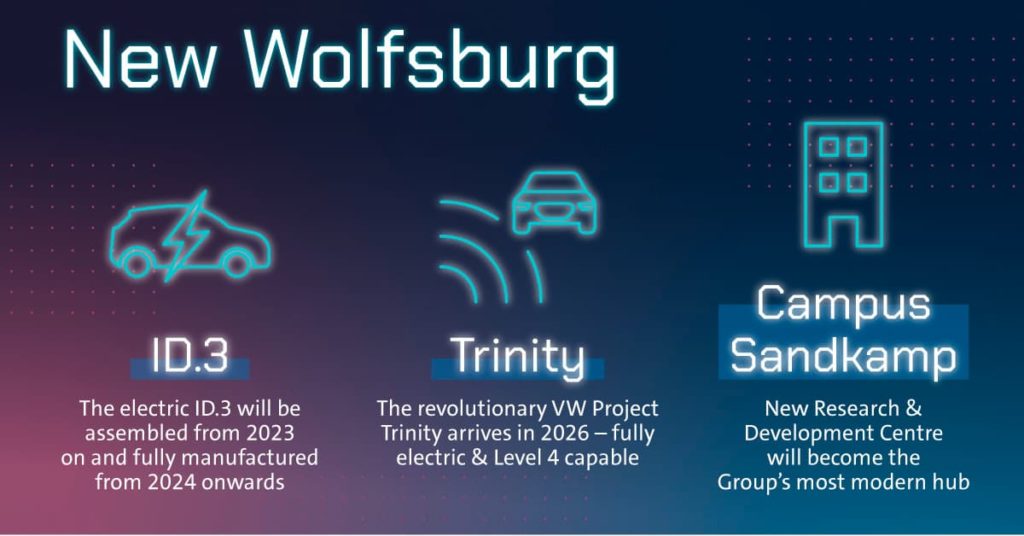
The company is also establishing a new R&D center, the Sandkamp Campus, which will house 4,800 engineers, entailing an investment of EUR 800 million.
With the Trinity project from 2026, an innovative and competitive battery-electric and Level-4 prepared car of the next generation is going to take place outside today’s factory premises. We are structuring vehicle manufacturing in Wolfsburg in a manner that is ready for the future.
VW Group CEO Herbert Diess at the Planning Round 70 announcement on 10 December 2021
In Wolfsburg, for the Trinity project, there will be a completely new approach, we’ll have a highly modern factory that the entire auto industry will be interested to find out about it.
Daniela Cavallo, Chairwoman of the General and Group Works Council, at the Planning Round 70 announcement on 10 December 2021
Brandstatter had said earlier that the existing Wolfsburg plant’s internal combustion engine vehicle production lines will see a reduction from four to two in the future.
Volkswagen price the Trinity around EUR 45,000 at launch in 2026. Parent company Volkswagen Group plans to produce up to 40 million vehicles on the SSP eventually. It will gradually roll it out across brands.
From 2026 onwards Volkswagen brand’s Trinity project, together with the first only model on SSP, will scale the SSP into a volume, and by the end of this decade, we will have rolled our SSP across all of our core segments and all brand groups.
Markus Duesmann, R&D chief, Volkswagen Group, and CEO, Audi
Featured image: YouTube/Volkswagen News
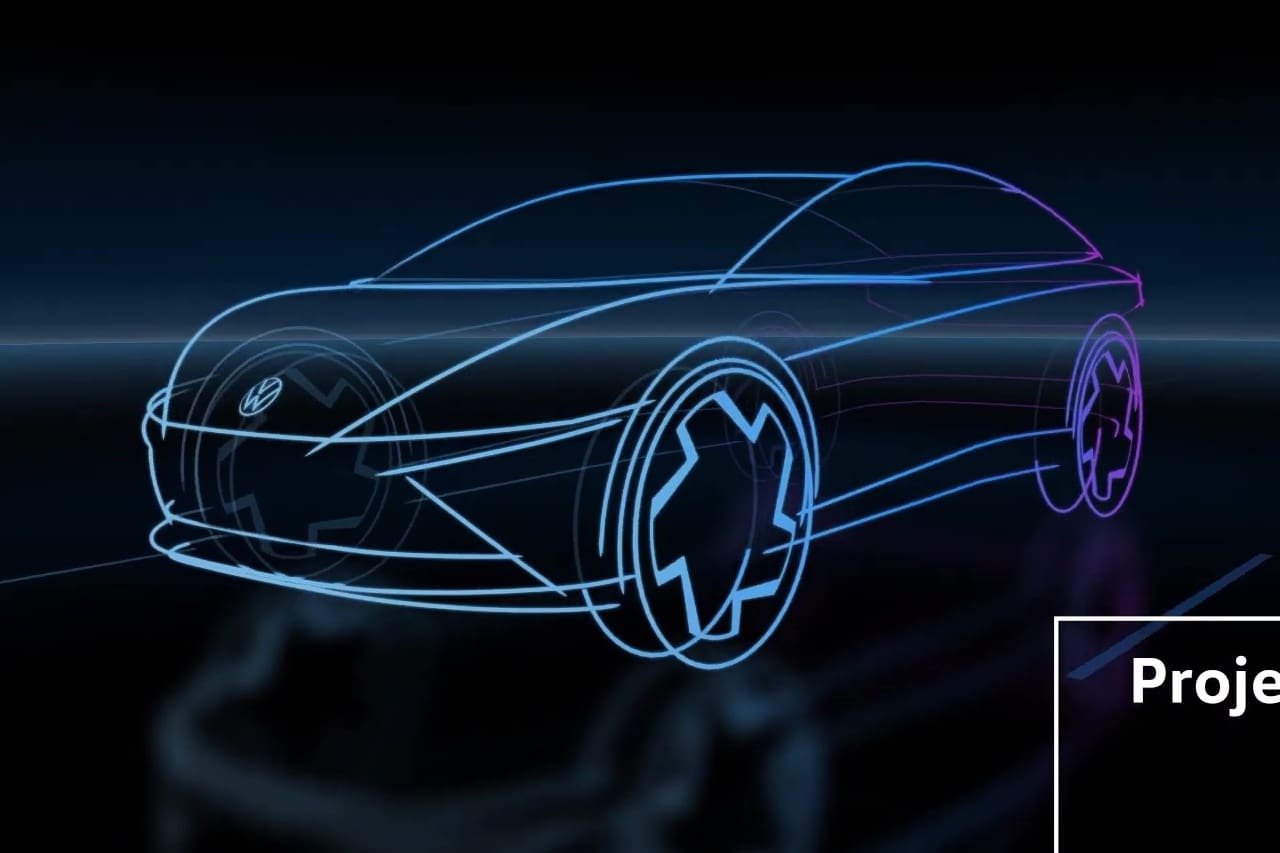
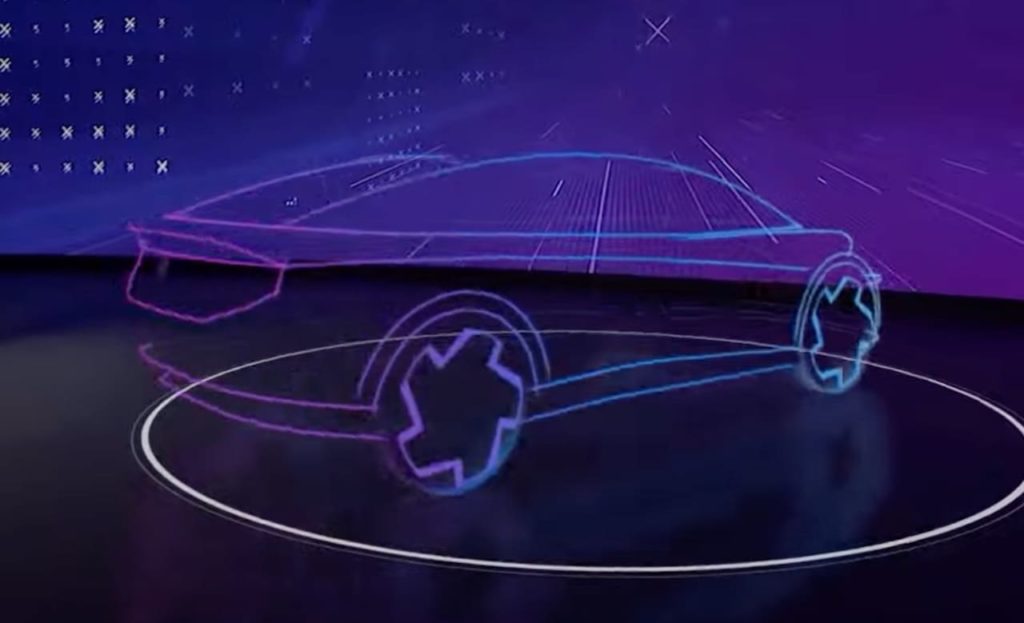
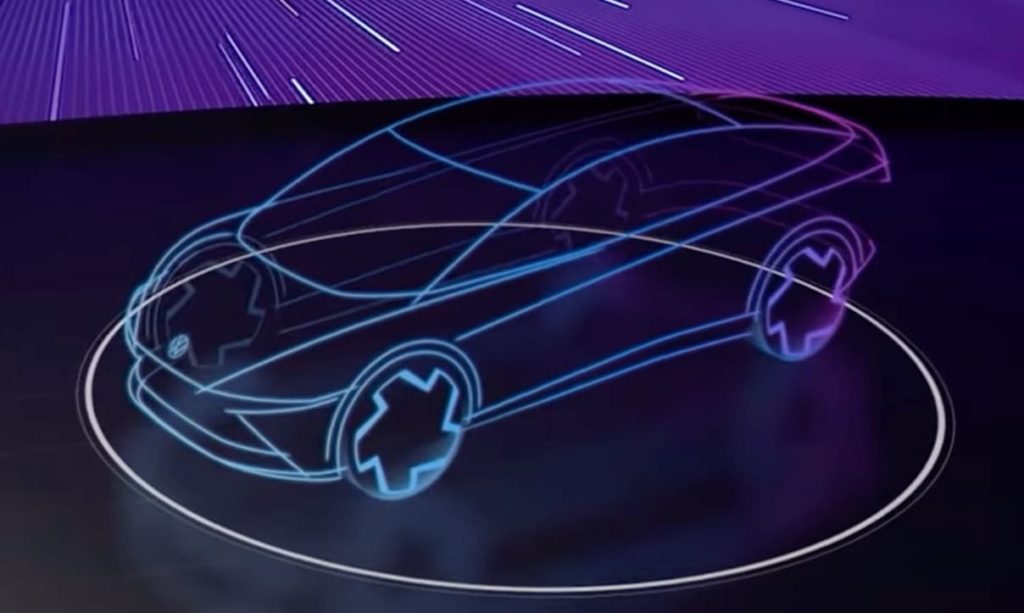
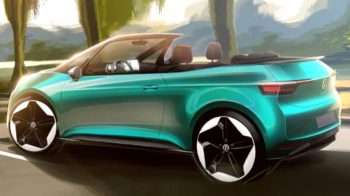

![Under Biden’s EV shift, will the VW ID.6 head to the U.S. by 2023? [Update]](https://electricvehicleweb.com/wp-content/uploads/2021/04/New-VW-ID.6-350x201.jpg)